Blue Fir Trees: Popular Varieties and Tips for Growing Them
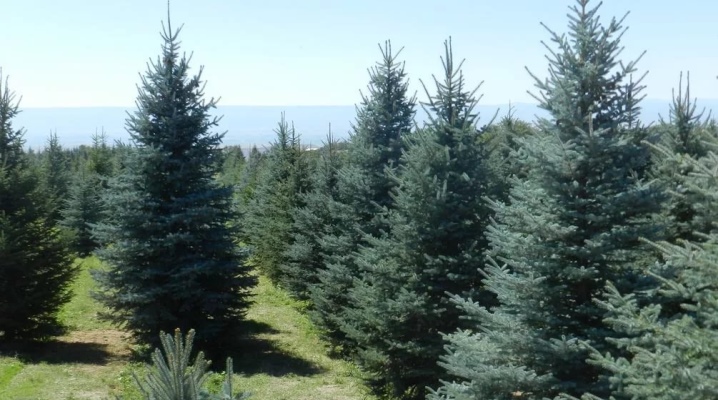
Among all the variety of conifers growing on Earth, it is impossible to pass by the beautiful fir. Slender, evergreen pyramidal trees with flat needles are found at various latitudes, from the Arctic Circle to the Pacific coast of South America.

Description
Fir is a coniferous tree with an even trunk and a crown consisting of horizontally arranged branches. They are densely covered with perennial flat needles with a characteristic notch at the end. The color of the upper surface of the needles can be green, blue or grayish-green, the lower side has 2 whitish stripes. Another feature of the tree is the standing cones. Plants with blue needles are found among different types of fir and are most often used in landscaping for their decorative properties.
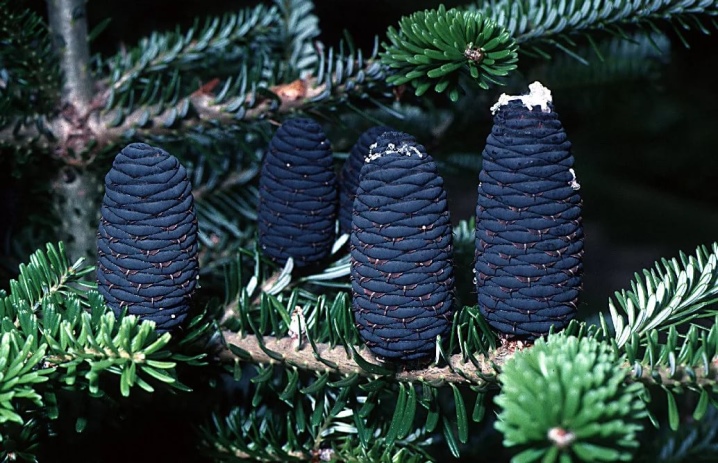
Monochromatic fir
The monochromatic fir is native to the highlands of western and southwestern North America. Its needles have the same greenish-bluish-blue color on both sides. Breeders have bred varieties of this species with different colors of needles: yellow, silver, blue.
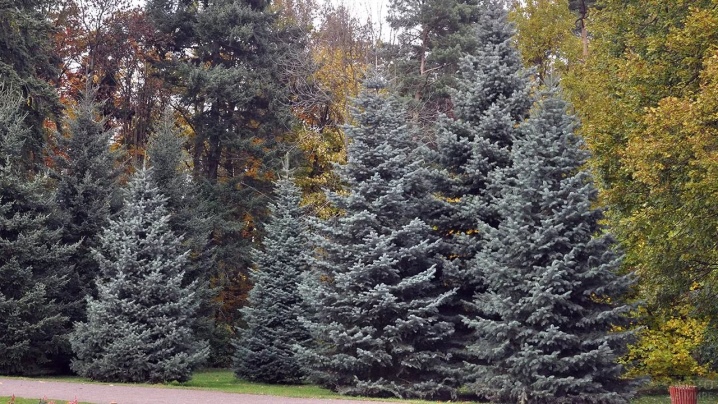
Blue firs include such varieties.
- Archers Dwarf. A sun-loving bonsai with a wide-conical crown and blue needles.
- Birthday broom... Slow growing compact dwarf with long silvery-blue needles. The growth of the tree is about 2.5 cm per year.
- Blue Spreader. Gray-blue twisted needles adorn the cushion-shaped crown of a mini-fir.
- Blue Cloak. Weeping variety of columnar appearance with blue needles.
- Fagerhult. This variety is distinguished by the powerful appearance of a lush crown with drooping branches and long blue needles.
- Hexe (Hex). A blue dwarf with a disheveled crown, like a witch's panicle.
- Mike Stearn (Mike Starn). The mini-fir shaped like a ball is decorated with needles of light blue color.
- Mora. One of the slowest growing dwarf varieties. The annual growth rate is less than 2 cm.
- Pigglemee. The flattened sphere of the crown of a dwarf tree is more spreading than other similar varieties. The blue needles of the fir are very short and curved.
- Schramii... The bluish-blue needles of this variety often form a V-shape.
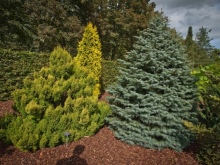

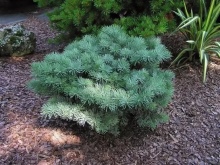
Subalpine fir
The rough-fruited or subalpine fir is indigenous to the highlands of western North America. The following varieties have a blue shade of needles:
- variety of wild fir var. arizonica 1901having a bluish-green surface of needles, which is often dissected at the end;
- variety "Compact", dwarf species, has a wide-conical crown with bluish-green needles;
- southern subspecies of subalpine fir - cork is the owner of the blue needles.
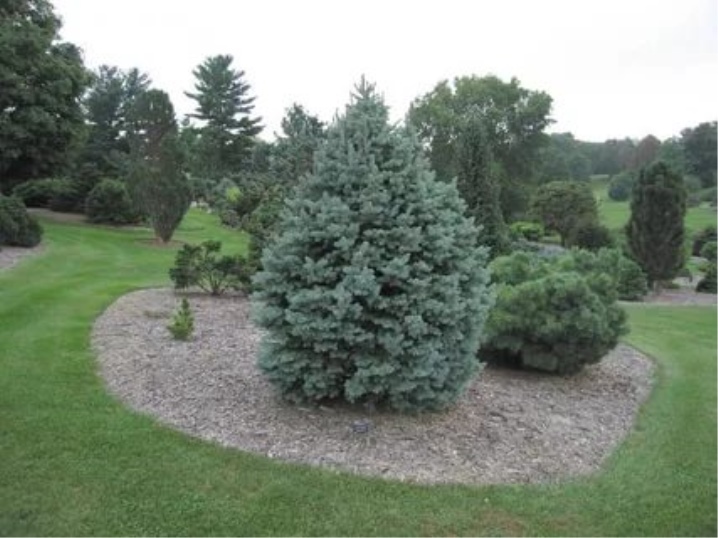
In addition to these, there are several more varieties with this crown color:
- "Blue horse" with a crown in the form of a pyramid and azure needles;
- "Kenwich Blue" with the softest blue needles;
- "Logan Pass" - slow-growing mini-fir with a spherical crown.
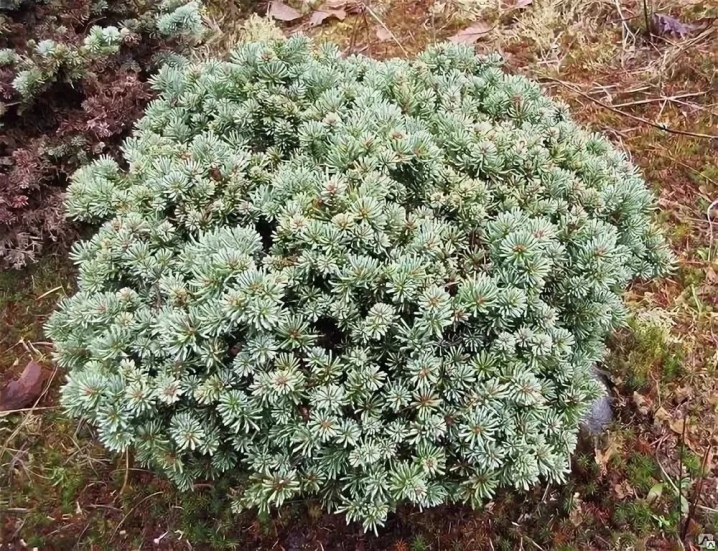
Korean fir
Korean fir grows in the mountainous regions of Korea and on Jeju Island. The tree has a wide cone-shaped crown, which is formed by branches densely covered with tough, saber-like needles. This species is widely used in ornamental plant growing.
The number of varieties today is about 100 species.
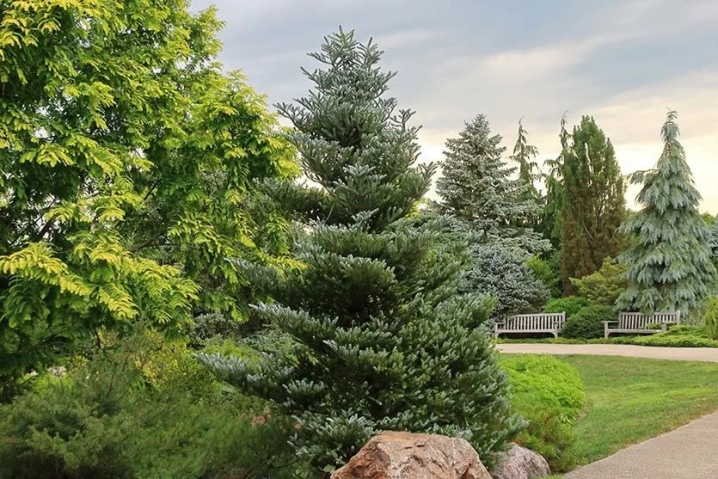
To compile a complete description of Korean fir varieties with blue needles, a separate article is required. Such varieties are best known.
- "Blue Emperor"... A dwarf variety with an irregularly shaped creeping crown in the form of a pillow. The needles are short, soft, bluish-silvery.
- "Blue Magic". A low-growing species with a wide-conical crown and dark blue-green needles. The cones of the Blue Magic are purple.
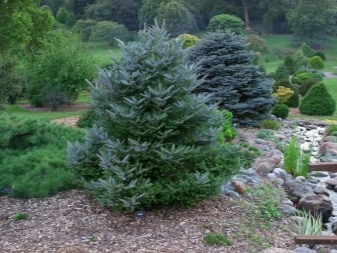
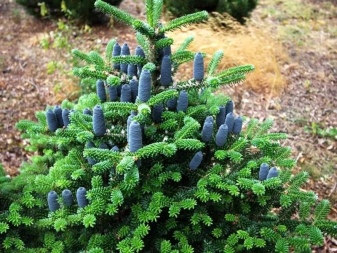
Balsam fir
Of the small number of balsamic fir varieties, only Glauka has a blue tint in the upper part of the needles.
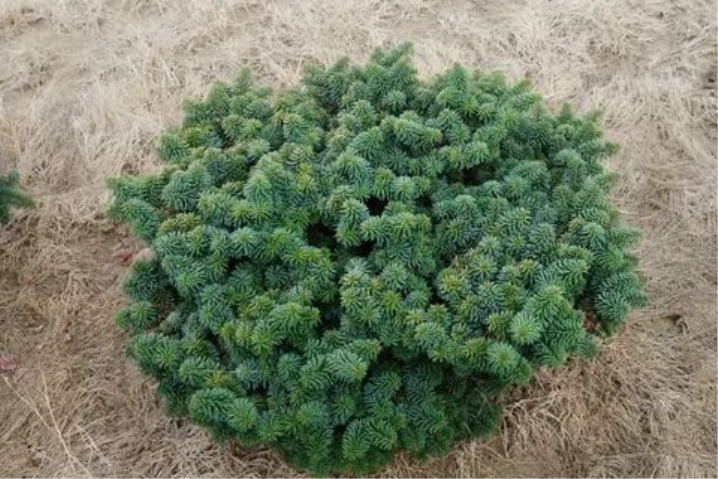
Landing
If you decide to plant blue fir on the site, then you should know that the best time for this is early spring or late summer - early autumn. When choosing a landing site, you need to consider the following points:
- the plants are shade-tolerant, but the best place to plant would be an area with good light in the morning and light shade in the middle of the day;
- trees are wind-resistant, but they should be protected from wind turbulence and unnecessary drafts;
- fir trees react strongly to soil quality;
- although the plants are drought-resistant, they thrive better in high humidity.
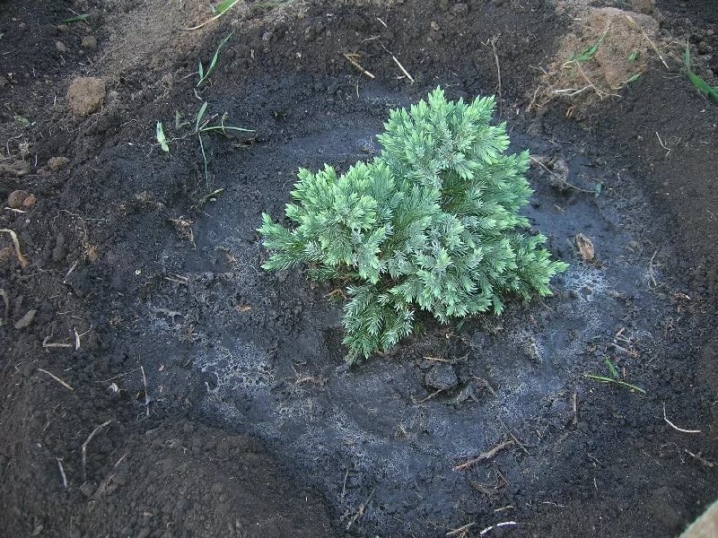
For planting, a pit is prepared with a depth and diameter of at least 0.6 m. A drainage of coarse pebbles, broken brick with a layer of up to 0.3 m is laid on the bottom. A soil mixture of coarse sand and peat is prepared and poured into the pit, one part at a time, 2 parts of loam and 3 parts of leaf humus. 0.25-0.3 kg of nitroammophos and about 10 kg of sawdust are added to the mixture. Seedlings are planted in the prepared hole, placing the root collar at the same level with the soil surface. Plantings are watered abundantly, the soil surface is mulched.
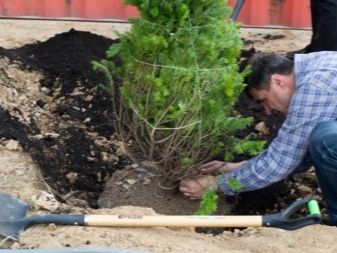
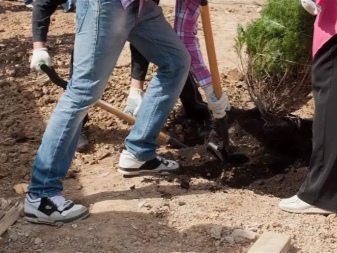
Care
Due to the fact that the fir is quite unpretentious and has a decorative crown, it requires little care.
- Top dressing once a year with a universal fertilizer for conifers. The first time no earlier than 2 years after planting.
- Watering as needed and sprinkling during the hot season.
- Sanitary pruning of the crown.
- Loosening the soil and removing weeds.

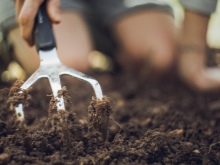

Mature trees are quite frost-resistant, but young plantings hibernate under cover to avoid freezing the crown top.
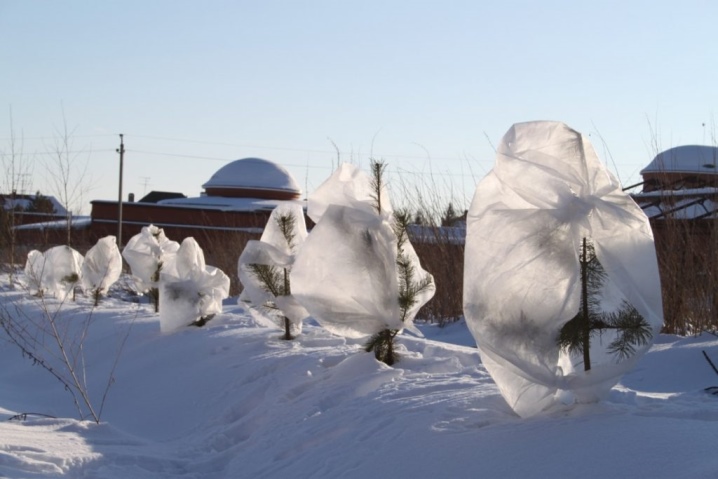
In the next video, you will learn how and by what characteristics you can distinguish spruce from fir.



































































The comment was sent successfully.